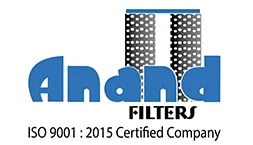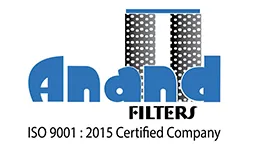
Choosing Between Cartridge vs Bag Filters: Which Is Right for Your Plant?
Dust isn’t only bothersome in many industrial applications—it’s everywhere! Did you realize our manufacturing processes release dust in over 80% of cases? It may harm both workers and machines. Consider sectors such as beverages, cosmetics, and pharmaceuticals. Even a small amount of dirt can ruin everything and cost a lot of faith and money.
Dust collecting systems, invaluable to numerous sectors, come into play here. In the center of these? Dust collector filters ensure that we breathe clean air and maintain a safe environment.
The cartridge filter and the bag filter are two major actors. Although bag filters have long been used and are capable of managing heavy dust loads, cartridge filters are gaining popularity due to their compact size and higher efficiency. Choosing the right filtration system for your plant is crucial to ensure smooth operations, maintain product quality, and meet compliance standards.
Understanding Cartridge Filters
What Are Cartridge Filters?
Cartridge filters work as a filtration method by using pleated or cylindrical elements to remove contaminants from liquids. They are used in manufacturing and industrial settings to exclude dangerous dust, particles, and gases from the airstream.
Cartridge filters work by forcing contaminated air through the filter medium, which traps particles on the air’s surface. To increase the filter media’s surface area, they are frequently constructed with pleated designs. Some cartridge filter manufacturers also offer high-performance versions with improved chemical and temperature resistance.
Common Applications
Cartridge filters demonstrate their effectiveness in various settings. They are excellent at capturing small dust particles during metalworking and welding operations, protecting both equipment and workers.
They are essential to preserving product purity and following strict safety guidelines in the pharmaceutical industry. It demonstrates their adaptability and effectiveness in guaranteeing safer, cleaner workplaces.
Advantages of Cartridge Filters
- High filtration efficiency: Depending on the filter’s micron rating, cartridge filters can efficiently remove particles of different sizes, including submicron particles.
- Extended filter life: Cartridge filters typically last longer and may require less cleaning or replacement.
- Greater flow rates: Cartridge filters are well-suited for systems that demand high flow volumes, as they typically support faster flow rates.
- Chemical compatibility: Cartridge filters can tolerate exposure to a greater variety of chemicals and fluids and are typically more chemically compatible.
Limitations
- Greater initial cost: Cartridge filters are generally more costly than bag filters, particularly for applications requiring frequent filter changes or high flow rates.
- Limited capacity to hold dirt: Because cartridge filters have a lower surface area than bag filters, they can only hold a certain amount of debris and may need to be cleaned or replaced more regularly.
- Low adaptability: Cartridge filters might not be appropriate for every industry or application, and they might have restrictions on operating conditions or chemical compatibility.
Understanding Bag Filters
What Are Bag Filters?
The idea behind bag filters is straightforward but efficient. Dust-laden air enters the system and travels through filter bags, which are composed of specialized filter media. The particulate matter is captured by these bags.
The efficiency of this process largely depends on the dimensions of the filter bag and the type of media used in the filtration system. For example, research found that a woodworking facility’s dust emissions might be decreased by up to 70% by employing polypropylene filter bags.
Typical Use Cases
Bag filters are very important in many workplaces. They are robust and suitable for various tasks, each with unique dust issues.
For instance, woodworking shops. Wood dust from the production process is highly prevalent. But you know what? Nearly 90% of it may be captured by bag filters, resulting in cleaner air and higher-quality products.
And it’s more than just dust! In heavy environments like foundries or where fiberglass is cut, the air contains a variety of pollutants, ranging in size from tiny to chunky. Bag filters are excellent here since they capture over 85% of dust, protecting both humans and equipment.
In many production scenarios, bag filters are superheroes.
Benefits of Bag Filters
- Effectiveness: Bag filters enable you to effectively maintain a clean and contaminant-free work environment because of the design of the bags and how the device works.
- Simple upkeep: Filter maintenance is made simple by automated cleaning systems, saving money and time.
- Saving energy: Less energy is needed for the system’s overall operation when there is less resistance to the airflow through the sleeves.
Drawbacks
- Decreased Filtration Efficiency: Not suitable for applications requiring submicron particle removal.
- Higher Maintenance: If a bag is overloaded or improperly secured, it will rupture or fly-bypass.
- Inconsistent Performance: Filtration may decline over time if not sufficiently monitored.
Contact Anand Filters today for expert filtration solutions and support.
Key Comparison Factors
Filtration Efficiency
Various elements involve industrial filter comparisons with bag and cartridge filters. Filtering efficiently is essential; cartridge filters work best for small particles, and bag filters work best for bigger particles. Experts recommend bag filters for dust-producing sectors, such as cement, steel, and power generation. In contrast, cartridge filters are used in general manufacturing and welding, where the particulates are finer, and air quality regulations are strict.
Flow Rate and Capacity
The idea behind bag filters is to capture dust particles on the surface of the filter bag. The filtering system directs dusty air through bags that capture dust particles, allowing clean air to pass through.
The basic idea behind cartridge filters is to collect as many dust particles as possible on the cartridge. As air passes through the cartridge, dust particles are captured on its outer surface, allowing only clean air to continue through. The cleaned air is then allowed to pass through and return to the structure.
Maintenance and Replacement Frequency
Maintenance and replacement frequency are also crucial in this industrial filter comparison. Operators replace bag filters less often than cartridge filters. However, cartridge filters may be easier to maintain.
In high-particulate circumstances, operators may often replace cartridge filters due to their poor dirt-holding ability and increased expense. Bag filters, on the other hand, can handle more dust and last longer due to their bigger surface area.
Operating Cost
Due to cheaper material and production costs, bag filters require less capital to purchase and install.
Cartridge filters cost more initially than bag filters, and as the facility operates the setup, it will require new cartridges.
How to Choose the Right Filter for Your Plant
Whether you choose bag or cartridge filters, you must consider the best filtration system for your plant. Consider using a cartridge filter if you have space constraints and are dealing with finer dust. However, a bag filter might be the best solution if you are dealing with larger dust particles. To guarantee that the filter unit you choose is the appropriate answer, always speak with manufacturers with a good reputation.
Conclusion
Deciding between a bag filter and a cartridge filter is essential for maximizing industrial air filtration systems and making your workers’ workplaces safer. Due to the unique type of benefits and drawbacks of each type of dust collection filter, particular operational requirements, dust properties, and dust collector safety regulations must be considered.
Making well-informed decisions is essential to attain the best possible air quality control and operating efficiency in every industrial setting.
Do you require additional details? To get precise setup help, schedule a consultation with one of our experts at Anand Filters. Contact us now.

